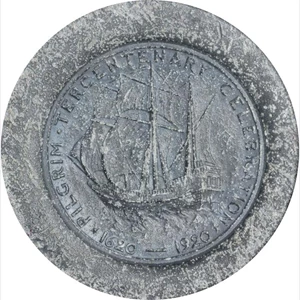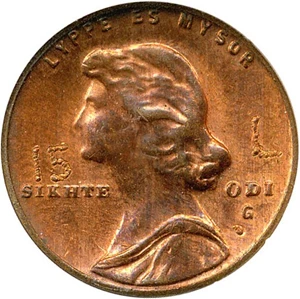Greysheet & CPG® PRICE GUIDE
- U.S. Coins /
- Pattern Coinage /
-
Die and Hub Trials and Splasher Values
About This Series
No rarity ratings are listed, as most are unique. Exceptions are noted. We have assigned Judd numbers to these pieces with the exception of certain items which modern scholarship suggests are not genuine Mint products (an example being the 1800 half dime). These are listed at the end of this appendix in a “Miscellaneous Items” section. In some instances, citations are taken from catalogs published generations ago, and these pieces have not been examined by modern scholars. For some of these, authenticity may be in doubt.
A die trial is an impression from a working die with incuse features, resulting in a trial piece with the features raised or in relief, as on a regular coin.
A hub trial is an impression from a hub, with lettering and design raised in the hub, resulting in the features being incuse or recessed on the trial. Some hubs have but a single element, such as the head of Miss Liberty. Others include lettering and numerals. Until circa 1907 to 1908, hubs and master dies did not include dates. These were punched in separately using four-digit logotypes, a practice which began at the Mint in the very late 1830s and was used on all denominations by 1840. Thus, an obverse hub or master die trial with a date reflects two separate impressions on the trial piece: the hub or master die and, separately, the date logotype. Relevant examples are furnished by J-A1867-8 and J-A 1867-9, each an impression of the same hub, but with the date logotype in a slightly different position.
A master die trial is similar to a hub trial and is listed as a hub trial. A master die has features raised, and if made before about 1907 to 1908, includes all features of the working die except the date, which was punched in separately on the working die. Master die impressions are incuse or recessed on the trial.
A whimsy or practice piece is a metal blank on which various date punches or hubs were impressed, perhaps for practice, but not related to any known pattern issue. Sometimes multiple different date punches were used.
Paper-backed splashers, not specifically identified as such in the descriptions below, are impressions on very thin metal (often white metal or lead), backed with paper (plain or from a newspaper) to give a greater body to the metal and to permit a better die impression. Usually, only the layer adhering to the back of the metal remains.
While most trials were struck in metals such as copper, white metal, or lead, some are in other substances, including cardboard and red wax.
Catalog Detail
Legal Disclaimer
The prices listed in our database are intended to be used as an indication only. Users are strongly encouraged to seek multiple sources of pricing before making a final determination of value. CDN Publishing is not responsible for typographical or database-related errors. Your use of this site indicates full acceptance of these terms.




















From the Greysheet Marketplace
Buy Now: $3,695.00
Buy Now: $2,890.63
Buy Now: $120,000.00
Buy Now: $38,900.00
Buy Now: $5,500.00
Buy Now: $37,000.00
Buy Now: $3,121.88
Buy Now: $37,000.00
Buy Now: $31,500.00
Buy Now: $125,000.00
Related Stories (powered by Greysheet News)
View all news
Greysheet Catalog Details
No rarity ratings are listed, as most are unique. Exceptions are noted. We have assigned Judd numbers to these pieces with the exception of certain items which modern scholarship suggests are not genuine Mint products (an example being the 1800 half dime). These are listed at the end of this appendix in a “Miscellaneous Items” section. In some instances, citations are taken from catalogs published generations ago, and these pieces have not been examined by modern scholars. For some of these, authenticity may be in doubt.
A die trial is an impression from a working die with incuse features, resulting in a trial piece with the features raised or in relief, as on a regular coin.
A hub trial is an impression from a hub, with lettering and design raised in the hub, resulting in the features being incuse or recessed on the trial. Some hubs have but a single element, such as the head of Miss Liberty. Others include lettering and numerals. Until circa 1907 to 1908, hubs and master dies did not include dates. These were punched in separately using four-digit logotypes, a practice which began at the Mint in the very late 1830s and was used on all denominations by 1840. Thus, an obverse hub or master die trial with a date reflects two separate impressions on the trial piece: the hub or master die and, separately, the date logotype. Relevant examples are furnished by J-A1867-8 and J-A 1867-9, each an impression of the same hub, but with the date logotype in a slightly different position.
A master die trial is similar to a hub trial and is listed as a hub trial. A master die has features raised, and if made before about 1907 to 1908, includes all features of the working die except the date, which was punched in separately on the working die. Master die impressions are incuse or recessed on the trial.
A whimsy or practice piece is a metal blank on which various date punches or hubs were impressed, perhaps for practice, but not related to any known pattern issue. Sometimes multiple different date punches were used.
Paper-backed splashers, not specifically identified as such in the descriptions below, are impressions on very thin metal (often white metal or lead), backed with paper (plain or from a newspaper) to give a greater body to the metal and to permit a better die impression. Usually, only the layer adhering to the back of the metal remains.
While most trials were struck in metals such as copper, white metal, or lead, some are in other substances, including cardboard and red wax.
Catalog Detail
Legal Disclaimer
The prices listed in our database are intended to be used as an indication only. Users are strongly encouraged to seek multiple sources of pricing before making a final determination of value. CDN Publishing is not responsible for typographical or database-related errors. Your use of this site indicates full acceptance of these terms.










 Loading more ...
Loading more ...











